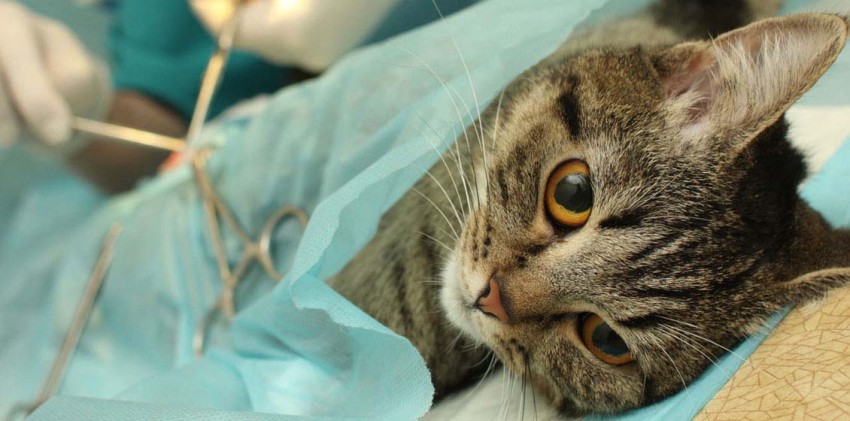Is the dog healthy? How to determine.
 In this article I will touch on the general health issues of dogs, and especially this aspect of the dog-owner relationship, such as attention and care for your dog. Remember, with her appearance in the house, you have a big responsibility.
In this article I will touch on the general health issues of dogs, and especially this aspect of the dog-owner relationship, such as attention and care for your dog. Remember, with her appearance in the house, you have a big responsibility.
Firstly, the condition of your dog depends on the conditions that you have managed to create.
Secondly, and most importantly, from your attention to it. If you spend a lot of time with it, play, watch, you will easily notice changes that may signal a disease. Consequently, you will be able to take action and consult a doctor in time, for example, in a reliable and proven veterinary clinic. The dog itself will not complain and the doctor will not call, so everything depends on you.
Therefore, look after your pet, know him, spend more time with him!
So, how to identify the signs that distinguish a healthy dog from a sick one?
First, the well-known. A healthy dog’s eyes are clean, the coat is shiny, the dog is mobile and cheerful (naturally, age plays its part). The nose is cold and wet (but rely only on this), exceptions – if the weather is hot and the dog has moved a lot or has recently woken up. Also a healthy animal breathes evenly, has a good appetite, regularly goes to the toilet.
Now let’s take a closer look at those signs that need special attention.
Temperature. Usually, owners are guided by the dog’s nose, but in case of any suspicion of a disease, it is necessary to measure the temperature. Norm is a temperature from 38 to 39.2 degrees Celsius. Recommendations for the procedure – lubricate the tip of the thermometer with petroleum jelly or moisturizer, enter it carefully, sudden movements can injure the dog. Also, do not let the dog move abruptly and especially sit down. Be sure to disinfect the thermometer!
Activity. If an active dog usually behaves sluggishly, tries to hide in a dark place, or there are others that are sharply different from the usual difference in behavior, then there are clear signs of poor health. A sharp increase in activity is also a sign that is worth paying attention to.
Breath. A change in respiratory rate is an important symptom of many diseases. How to measure it? You need to know the usual frequency and, for comparison, measure it at the time of suspicion of a health disorder. To do this, you need to count the number of breaths and exits during a period of time (usually a minute is used). Inhalations can be counted by visible signs – for example, by the movement of a dog’s chest.
On average, 10–20 breaths per minute are considered the norm. Naturally, the dog often breathes during exercise, in heat, etc.
Palpitations. Heart palpitations can tell us that the dog is in pain or has a fever. It may also increase in some cardiac diseases.
Drink. You need to have an idea how much water your dog usually drinks, as increased thirst can signal diseases, such as kidney problems.
Urination. Too frequent or unusually rare urination also tells us about health problems. Normal urine is light yellow, transparent, does not contain blood or incomprehensible inclusions.
Appetite. Both increased and weakened appetite can be signs of illness. At least, having found it, it is necessary to watch the pet more attentively. Surprisingly strange eating habits (perverted appetite), such as attempts to eat their own excrement, also serve as a sign of illness.
Sharp weight loss. Sharp weight loss – with a 90% chance of a sign of illness.
Oral cavity. As the oral cavity can also identify some diseases. The normal color of the gums is pink, but red indicates a disease. Also a symptom of many diseases can be bad breath (diseases of the teeth, gums, etc.).
Signs of digestive problems. If a dog has diarrhea, vomiting and vomiting continues for more than 1 day or diarrhea for more than 2 days, you should contact a veterinarian. It is also necessary to show the animal to the doctor if the feces are black and / or it contains mucus or blood.
Increased abdomen. A noticeable increase in the abdomen can both serve as a symptom of a number of diseases and also inform us about the pregnancy of the dog or banal obesity.
Cough, sneezing. As with people, coughing and sneezing are symptoms of a variety of diseases.
Wool. If the coat is dull, disheveled, or the dog has scratching and / or baldness, you should consult a doctor.
Pain sensations. If the dog is in pain during normal daily life, then this is an undoubted and very serious symptom of the disease.
But how to understand what and where your dog hurts?
I remembered the old joke: “The veterinarian comes to the doctor in a poliklinku.
Doctor: “Well, what hurts you?”
Veterinarian: “Uh, so everyone can.”
Here are some signs that will help you determine whether a dog is in pain:
Paws. The dog usually raises the painful paw, tries not to lower it to the ground or drags it along the ground. Or there is a limp.



